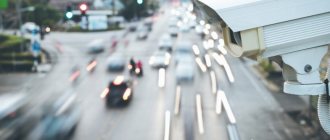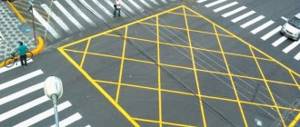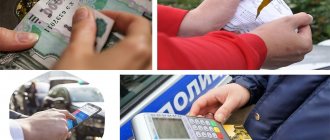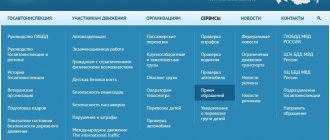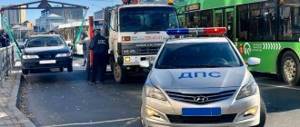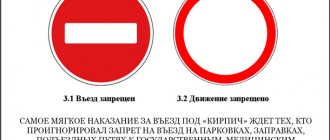What is a video recording camera?
A photo-video recording camera is a technical device for automatic, round-the-clock recording of traffic offenses.
The main goal of installing such devices is to reduce the number of offenses and accidents in general on the country’s roads. As a rule, photo-video recording cameras are installed on dangerous, emergency sections of the road and within prohibitory signs.
If earlier we only knew about the existence of cameras with functions for measuring the speed of vehicles, and they only fought against speeding, now multifunctional devices are appearing. They are able to record several types of violations using one camera. Modern stationary devices can monitor the behavior of cars on pedestrian areas, near railway crossings, at traffic lights, and at major intersections.
Almost all major cities this year have allocated lanes for public transport and installed cameras to guard them. Cameras that record driving beyond the stop line quickly teach drivers not to drive beyond it - you pay traffic police fines, and the desire to violate it disappears by itself. The technical equipment of modern cameras allows you to film even such offenses as driving onto the sidewalk, driving with the headlights off, turning from the middle (second) row, moving freight vehicles outside the second lane, etc.
With all the variety of new cameras, we see on the roads and, especially in the bushes, a huge number of portable cameras on tripods that record only the speed limit. It turns out that in order to save budget money, new regulations were adopted, according to which portable video cameras became a private business. Now any entrepreneur can enter into an agreement with the state and receive 230 rubles from each fine paid.
There is another type of camera – mobile camera. Traffic police officers install them in their cars and record violations of parking rules, entering one-way traffic, driving onto the sidewalk, curb, green zone and much more.
What violations are recorded by cameras?
Installed on emergency or problematic sections of roads, photo recording cameras, which initially track only speeding, can now record some other traffic violations. A fine can be guaranteed for running a red light, driving into the oncoming lane, driving in the wrong place and other offenses. Moreover, the list of traffic violations recorded by cameras is only expanding.
According to available information, cameras for photographing stolen cars are planned to be “repurposed” in the near future to determine the presence of an MTPL policy. It can be assumed that in the future the number of photo recording devices on roads will only increase, the automated system of punishment for offenses will improve, which will ultimately inevitably lead to an increase in the level of road safety.
The principle of operation of photographic recording
The principle of operation of photo recording devices is the simplest: establish the fact of traffic violations, document it (take a photo of the license plate number of the violating vehicle), send the data to the central server. Next, information about the offender is processed and generated in the form of a letter to the addressee. The obligatory attachment of the “letter of happiness” will be a protocol, a resolution on an administrative fine and a photograph of the violating car indicating the license plate number, date and place of the violation.
Stationary and portable cameras work using this method. If you are caught in the field of view of a mobile photo recording camera, then it is unlikely that you will be able to avoid communicating with traffic police officers. The fact is that mobile cameras operating in conjunction with State Traffic Inspectorate employees do not involve sending letters after an offense is detected.
Punishment occurs immediately, according to a handwritten protocol at the place where your car is stopped or at the next stationary post, where information from colleagues will be immediately received.
Camera location
Private portable cameras have their own location rules:
- can be installed on those sections of the road where there are no stationary cameras;
- can be installed in open (visible from the road) or closed mode (in bushes, in fences, in boxes);
- their installation should not be indicated by warning signs;
- The accuracy of vehicle speed measurement directly depends on the installation angle. Permissible error 2 km/h. If the camera is positioned incorrectly, an error of up to 7 km/h may occur.
Mobile cameras have their own characteristics:
- are small in size and installed directly in the vehicles of traffic police officers;
- they cannot transmit information to a central server.
Stationary cameras, installation features:
- on the territory of the Russian Federation, automatic stationary cameras are installed in accordance with clause 6 of GOSTR 57145/2016;
- traffic rules regulate the presence of markings or signs 8.23. “photo and video recording” in front of stationary cameras, but the absence of a sign does not relieve the driver from administrative liability for an offense;
- Often, in order to save the state budget and at the same time to maintain driver discipline, dummy cameras are installed;
- stationary cameras are usually marked in navigator programs.
What speed limits are set in the traffic rules?
There is no single permitted speed limit; the indicator depends on the terrain, the vehicle, and the type of cargo being transported.
All established restrictions are enshrined in section 10 of the basic law of participants on the road “Road Rules”.
Sometimes a driver may find himself forced to drive slower than the legal limit. For example, during heavy rain or snowfall, driving on a bad road, or ice.
Traffic regulations prohibit driving faster than 60 km/h in populated areas , and if there is a road sign 5.21 (Residential zone) near the road, then the speed should not exceed 20 km/h.
The authorities of the constituent entities have the right to pass laws at the local level to change these boundaries depending on the individual characteristics of the area.
Outside the city, in small areas, the speed limit is set separately for each vehicle. Paragraph 10.3 of the traffic rules specifies the boundaries:
- the speed of cars, trucks weighing no more than 3.5 tons, small buses and motorcycles should be no more than 90 km/h;
- vehicles with trailers and trucks weighing more than 3.5 tons can drive no faster than 70 km/h;
- when transporting people in the back, as well as when transporting groups of children, you can drive at a speed of no more than 60 km/h;
- when towing another car - no faster than 50 km/h.
According to traffic rules, the driver must drive in such a way that it is possible to monitor the traffic situation. If visibility deteriorates, for example, during heavy snowfall or fog, the driver is required to slow down and drive on the road at low speed. Some even stop altogether to wait out the bad weather.
According to paragraph 10.5 of the “Road Rules”, you must not exceed the speed indicated on the installed signs. And it is forbidden to move when the transport has design features.
Peculiarities of issuing decisions for violations recorded by camera
If an offense is recorded by an automatic photo-video camera, then when an administrative fine is imposed, its minimum amount is always imposed, except in cases where deprivation of a driver’s license is provided. In cases of serious violations, where there should be a penalty in the form of deprivation of a driver’s license, a fine of 5 thousand rubles is imposed. It was decided by law to use the minimum amount of administrative penalties in order to avoid overloading the courts with controversial cases.
Radar detectors and the legality of their use
Many motorists consider devices commonly called radar detectors to be an effective means of “combat” detection of speed limit violations. In most cases, this mistakenly refers not to devices for active suppression of electromagnetic radiation, but to radar detectors - passive devices for indicating electromagnetic radiation in the frequency ranges used by traffic police.
Simply put, radar detectors only signal the presence of working police radars, but do not affect their operation in any way. The use of radar detectors is not only completely legal, but also welcomed by many police officers: a driver warned in advance about speed control usually prefers to comply with this regime.
A completely different matter is an active radar detector that generates radiation that suppresses the operation of police devices. Such devices are prohibited in our country.
The use of radar detectors that interfere with the operation of traffic police radars falls under Article 13.3 of the Code of Administrative Offenses of the Russian Federation: unauthorized (without a permitting license) operation of radio-electronic equipment and (or) high-frequency devices. Violation under this article is punishable by a fine of 500 to 1000 rubles with confiscation of the devices themselves.
Modern systems can determine the speed of a car without using radar: by recording the time it takes to travel a distance of a certain length. An information sign with a camera image warns of speed control on this section of the road.
How can I find out if there is a fine?
Drivers often search on the Internet: “Check photos of traffic violations online.” There are many websites offering their services for checking fines. According to lawyers, the most reliable information is available on the official website of the traffic police. Whatever page of the site you open, at the bottom there is always a section “Online services of the traffic police” and a tab “Checking fines”. You must enter the state registration number and vehicle certificate number.
The check occurs without reference to a specific person and provides information only about unpaid fines. Checking traffic police fines with photo recording will give results without a photo.
Where can I see photos from a video camera?
To watch a video of their offense, any driver can use the State Services portal or the traffic police mobile application.
Algorithm of actions on the Gosuluga website:
- Go to the website www.gosuslugi.ru
- Go to the “Transport and Driving” section.
- Go to the “Auto Fines” section.
- Fill out an application indicating your driver's license.
- Watch photo and video recording.
Algorithm of actions in the traffic police mobile application:
- Install the program on your phone or tablet.
- Enter your driver's license information and vehicle registration number into the program.
- Enter the data regarding the offense.
- Watch photo and video recording.
What can you get a fine for?
Most cameras combat speeding. Driving beyond the stop line and driving in a dedicated lane for public transport is also controlled by automatic devices. Therefore, drivers receive the largest number of fines for these offenses.
In large cities, in places with a large flow of traffic, multifunctional devices are installed that are capable of recording various traffic violations: prohibited overtaking, driving with lights off, driving onto the sidewalk, parking under prohibitory signs, driving through a prohibitory traffic light sign, driving into a “waffle iron”, etc. . All offenses caught by the camera will result in fines for the violators.
List of violations that can be detected by automatic systems
The list of recorded violations depends on the specific model of the device; the more expensive and technologically advanced it is, the more options it has. Today in the Republic of Belarus, most video cameras are capable of detecting speed limit violations and some others.
In large cities, cameras can detect the following offenses:
- entry into a lane intended for public transport (buses, trolleybuses);
- parking a vehicle in areas not designated for this purpose;
- driving beyond the stop line marked along with a traffic light or sign;
- not wearing a seat belt;
- entering a line intended for oncoming traffic;
- some other types of offences.
Amount of fine for photographic recording of violation
When photographing violations of traffic rules, minimum fines are established. As for speed limit violations, in 2021 the size of the fine depends directly on how much it is exceeded. So, exceeding 20 km/h is not punishable at all, but if the driver exceeds the speed by 20 - 40 km/h, he will receive a fine of 500 rubles. Anyone who violates the speed of 40 - 60 km/h for the first time faces a fine of 1,000 rubles, and a repeated violation will cost 2,000 rubles.
Speed violations of 60 - 80 km/h for the first time will bring the driver a fine of 2,500 rubles, repeated violations - 5,000 rubles. Let us remind you that paying a fine within the first 20 days from the date of the decision has an undeniable advantage. You can only pay ½ of its size.
How does a medium speed camera work?
First of all, the very concept of “average speed” should not be misleading. This is not a new rule or norm, but just a way of recording a violation. Simply put, if the controlled section is 1 km long and the permissible speed is 60 km/h, then a car should pass it in no faster than 1 minute. If automatic control systems record a shorter time, then the speed was higher.
But, let us emphasize once again, we are talking about only one of the possible methods of fixation. Next, we will consider all possible options for receiving fines for speeding, recorded by automatic means .
8(800)350-23-68
Dmitry Konstantinovich
Expert of the site "Legal Consultant"
Ask a Question
In fact, not a single video camera records speed at all. Its function is photo and/or video recording. Speed control is carried out by other elements of the overall control complex. But it just so happens in speech that this entire complex is called “chambers.” We will do the same in our further description.
For a better understanding, let's break the usual order a little and immediately start with a series of questions and answers that briefly explain how cameras work.
FAQ
